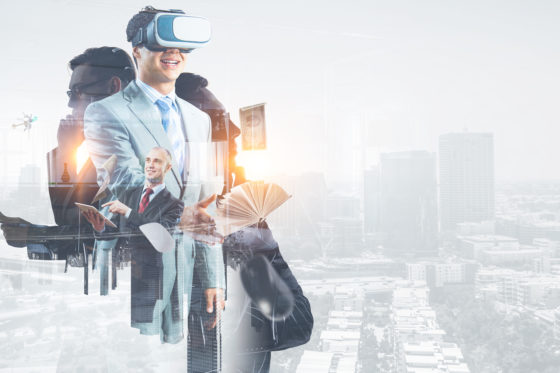From Game Rooms to Boardrooms, Virtual and Augmented Reality at Work

Now that Facebook has changed their name to Meta to stake their claim on the personal and business use of Virtual Reality (VR) environments -- the Metaverse - will this finally establish VR and/or Augmented Reality (AR) as commonplace technologies?
Despite many advancements in the past decade, VR and AR applications seemingly have not taken hold in the same way as our devices and other technologies like new 2D video game platforms or your tablet, or streaming services and social media, have. Why?
To understand why and see its potential, let's start with understanding the difference between VR and AR.
Understanding VR
Virtual reality requires the user to close themselves off from the real world by entering a specialized room filled with 360-degree high-definition screens, by entering a VR simulator like a professional flight simulator or by wearing a VR headset, so the user can be fully immersed in a virtual reality.
For quite some time now, VR headsets have been used by video gamers, but even today, the number of users is relatively small compared to 2D video gaming platforms. In addition, VR is being used in business for simulations, training, education and design work, but the use is currently still quite narrow and limited.
Understanding Augmented Reality
AR is different. Remember Pokemon Go -- the interactive smartphone game that had people wandering around catching creatures only visible through their screens? That created a huge explosion of interest for AR and the general public.
Today, there are a growing number of AR applications you can use with your smartphone camera for fun and for business, but how often do you use an Augmented Reality business application or when shopping at a retail outlet? Most likely not, right?
The Current State of Virtual Reality
As a precursor to where we are as a global society in the realm of VR, let's simplify the general idea of what VR actually is.
Instead of your traditional video medium, where a screen positioned in front of a user plays footage for their consumption on a smartphone, tablet, TV or a movie theater, VR adds an element of sensory movement including visual, audio, vibrations and body movements into the equation, creating an immersive experience for the user.
Early iterations of VR were largely found in entertainment destinations, such as Disney World. This did not feature individualized, immersive and interactive visuals, but rather a catch-all experience inside a simulator bay for bulk audiences to enjoy.
The latest VR applications, combined with a social media element, have enabled a new VR application. VR social apps like RecRoom, AltSpaceVR, VRChat and others allow individuals to meet in a virtual world and work or play together using a cartoon-like VR avatar that may or may not resemble themselves -- the Metaverse.
Professionally, these Metaverse applications will most likely catch on with younger employees who already love VR gaming and creating avatars of themselves, but the virtual workroom alone is a Soft Trend, because it will be a hard sell for most business users.
The Current State of Augmented Reality
AR and its applications are an even bigger unicorn in our current digital landscape, but that will change soon.
In comparison to VR, AR applications do not feature a completely fabricated environment meant to fully immerse a user. Instead, AR takes your actual environment, shown through a digital device, and projects graphics or information that isn't physically there on the screen as if it is, turning your actual material world into a multimedia experience.
AR is still met with lukewarm consumer reactions, largely due to the lack of devices at which we utilize it. An example of such was Google Glass. From a consumer standpoint, Google Glass turned out to be a flop due to lack of style and few useful applications of AR.
However, Ray-Ban recently collaborated with Facebook, releasing Ray-Ban smart glasses. This functions like wearing a Facebook camera on your face. You can take photos and/or capture 30 seconds of video; yet, improvements still need to be made in terms of quality and privacy issues.
Lead the Charge in VR and AR in 2022 and Beyond with Anticipation
A Hard Trend future fact is that these technologies themselves will only increase in power and performance, creating new growth opportunities for all. Your choice in taking advantage of this growing opportunity is the Soft Trend.
By focusing on the Hard Trend certainty and developing applications based on where the tech is predictably going, you will be using an Anticipatory Mindset to unlock potential for you and your organization to take advantage of the VR and AR space as the near future unfolds!
In the way of VR, one of the biggest potentials it has is in training and education. Consider flight simulators, where the better the virtual environments and physical devices that implement them become, the more powerful the physical training via VR becomes.
AR is already on the cusp of exploding on the software side for consumers; it just needs a physical device counterpart that unlocks its exponential application. Is Ray-Ban's collaboration with Facebook the push to make AR smart glasses commonplace?
Always keep your opportunity antennae up and be on the lookout for problems to solve both within and outside of your industry in 2022. This allows you to identify the low-risk, high-reward opportunities that VR and AR has to offer.









